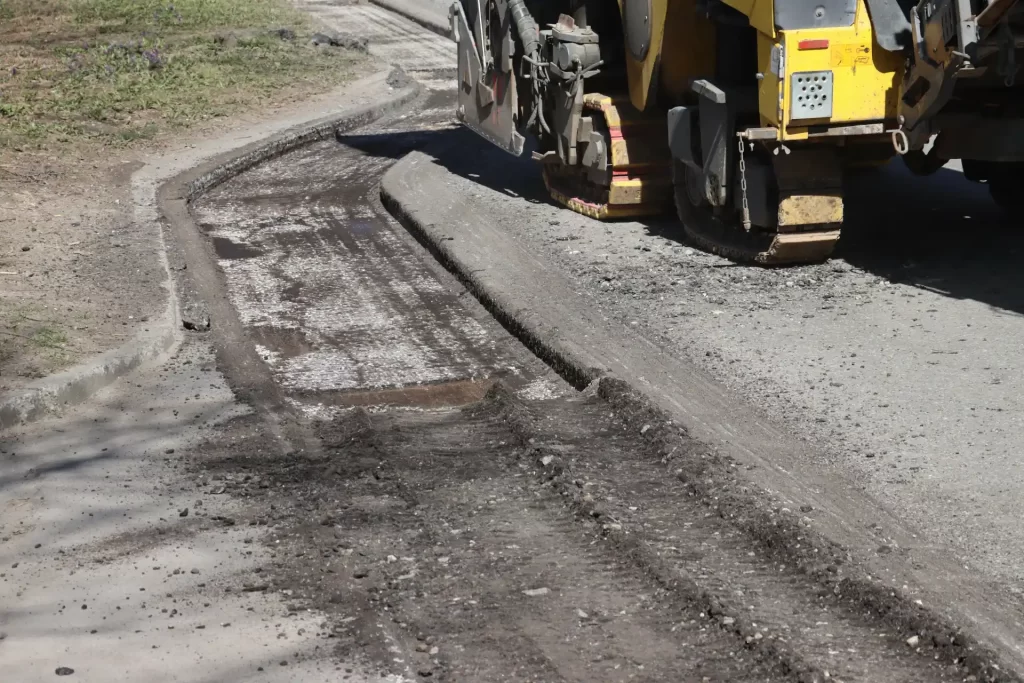Recognizing the signs of deteriorating asphalt and deciding when to replace it can be challenging. However, taking a proactive approach can be a cost-effective strategy in the long run. It not only saves money but also prevents further damage, ensuring the safety of all users. Seeking professional advice on asphalt replacement offers several key benefits, including saving time and money and ensuring the job is done correctly. Here are the key signs and factors that indicate the need for asphalt replacement:
Widespread Cracking
Alligator Cracks: These interconnected cracks resemble the skin of an alligator. They are a clear sign of structural failure, typically caused by the deterioration of the asphalt base. Alligator cracks can be fixed with simple patching but require complete asphalt replacement.
Large or Deep Cracks: If cracks are more than a few inches deep or widespread, it may indicate that the underlying foundation has weakened.
Potholes and Surface Depressions
Frequent Potholes: Potholes are signs of severe asphalt damage caused by water penetration, erosion, or freeze-thaw cycles. Frequent pothole repairs might temporarily solve the issue, but if they recur, it’s a sign that the asphalt’s structural integrity is compromised.
Surface Depressions or Sinkholes: Sunken areas or depressions in the asphalt surface indicate base failure. When water accumulates in these depressions, the damage worsens, eroding the underlying foundation. If these depressions become widespread, replacing the asphalt might be necessary.
Rutting and Warping
Rutting: Rutting is when grooves or indentations form in the wheel paths, usually due to heavy traffic or poor installation. Rutting compromises the smoothness and safety of the road, making driving uncomfortable or even hazardous. Deep rutting can weaken the entire structure, suggesting the need for replacement.
Warping: Warped or uneven asphalt surfaces can result from improper installation or heavy use over time. While minor surface warps can sometimes be repaired, significant or widespread warping usually indicates that replacement is the best option.
Drainage Problems
Poor Water Drainage: Asphalt that doesn’t drain water effectively results in pooling or standing water. Over time, water can penetrate the asphalt and erode the base layer, causing cracks, potholes, and structural damage.
Severe Fading and Surface Erosion
Oxidation and UV Damage: Asphalt that has become severely faded and brittle from prolonged exposure to sunlight and oxidation loses its flexibility and strength. This makes it more prone to cracking, crumbling, and surface erosion. Replacement may be necessary when the surface becomes too brittle to seal or repair effectively.
Raveling: The top layer of asphalt starts to disintegrate, and aggregate particles loosen and break away. If large asphalt sections are raveling, it signals advanced deterioration.
Age of the Asphalt
Lifespan of Asphalt: Asphalt typically lasts 15 to 25 years, depending on factors like climate, traffic load, and maintenance. If your asphalt is approaching or exceeding this age, even if it isn’t a major visible problem, assessing whether it needs replacement before serious issues arise is wise.
Previous Repairs and Maintenance History
Frequent Repairs: If you’ve needed frequent patching, sealing, or resurfacing over the past few years, the asphalt may be nearing the end of its life. Continual repairs can become costlier than replacing the surface entirely.
Inconsistent Surface Quality: If the asphalt has been repaired multiple times, the surface may become uneven, with patches of varying quality. At a certain point, replacing the entire surface offers a longer-lasting solution and a more uniform appearance.
Safety and Liability Concerns
Hazardous Condition: Cracks, potholes, or other damage can create safety risks for vehicles and pedestrians. Repeated or severe hazards could lead to accidents and liability concerns.
ADA Compliance: If the asphalt surface is no longer compliant with accessibility regulations, replacement may be necessary to correct slopes, cracks, or surface irregularities.
Here’s why asking a professional can be the best option: it provides relief and reassurance that you’re making the right decision for your property.
Accurate Assessment of Condition
a. Thorough Inspection
b. Identification of Root Problems
Customized Solutions.
a. Expert Guidance on Timing
Cost-Efficiency
a. Prevention of Costly Mistakes
b. Budget Management
Compliance with Local Regulations
a. Knowledge of Codes and Standards
b. Permitting and Documentation
Access to High-Quality Materials and Equipment
a. Superior Materials
b. Advanced Equipment and Techniques
Expert Installation for Long-Lasting Results
a. Proper Base and Subgrade Preparation
b. Correct Installation Practices
Warranties and Guarantees
a. Project Guarantee.
b. Liability Coverage
Increased Property Value and Curb Appeal
a. Enhanced Aesthetic Appeal
b. Professional Finishing
Saves Time and Reduces Stress
a. Efficient Project Management
b. Quick Turnaround
In summary, the time to consider replacing asphalt is when the damage becomes widespread, such as large cracks, potholes, or drainage problems, or when the surface has aged beyond its typical lifespan. While minor repairs and resurfacing can extend the life of asphalt, persistent issues and structural problems often indicate that total replacement is the best long-term solution for safety, cost-effectiveness, and durability while consulting a professional for asphalt replacement offers numerous benefits, including accurate assessments, tailored recommendations, cost efficiency, and high-quality results. Professionals ensure the job is done correctly, compliant with regulations, and with minimal stress. Their expertise helps you avoid costly mistakes, guaranteeing long-lasting, durable asphalt that meets your needs and enhances the value of your property.
